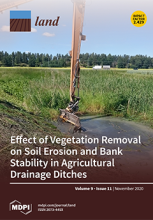/ library resources
Showing items 1 through 9 of 31.This paper investigates how natural resource conditions impact the physical development of cities and how, once built, the urban spatial structure leads to different patterns of resource use.
Estimates of the area or percent area of the land cover classes within a study region are often based on the reference land cover class labels assigned by analysts interpreting satellite imagery and other ancillary spatial data.
Civic participation has an irreplaceable role in the land-use planning process because it contributes a practical perspective to expert knowledge.
Irrigation land suitability assessment and mapping play an imperative role for sustainable utilization of scarce physical land resources.
Rural settlements account for 45% of the world’s population and are targeted places for poverty eradication.
Pricing of direct industrial real estate (DIRE) has long been under-researched due to the paucity of analysable data.
There has been much confusion in property rights inquiry into real (immovable) property (i.e., land) between open access and common property, and between public property and common property because that is often also open access.
Balancing urban development and ecosystem conservation in the context of natural resource scarcity can provide scientific guidance for land use planning.
With continuous rises in GDP, land cover in the Guangdong–Hong Kong–Macao Greater Bay Area (GBA) has undergone a drastic change over the period 1990–2018. In this study, land use in the GBA was divided into six types: farmland, forestland, grassland, wetland, construction land, and unused land.
Нумерация страниц
Land Library Search
Through our robust search engine, you can search for any item of the over 73,000 highly curated resources in the Land Library.
If you would like to find an overview of what is possible, feel free to peruse the Search Guide.






